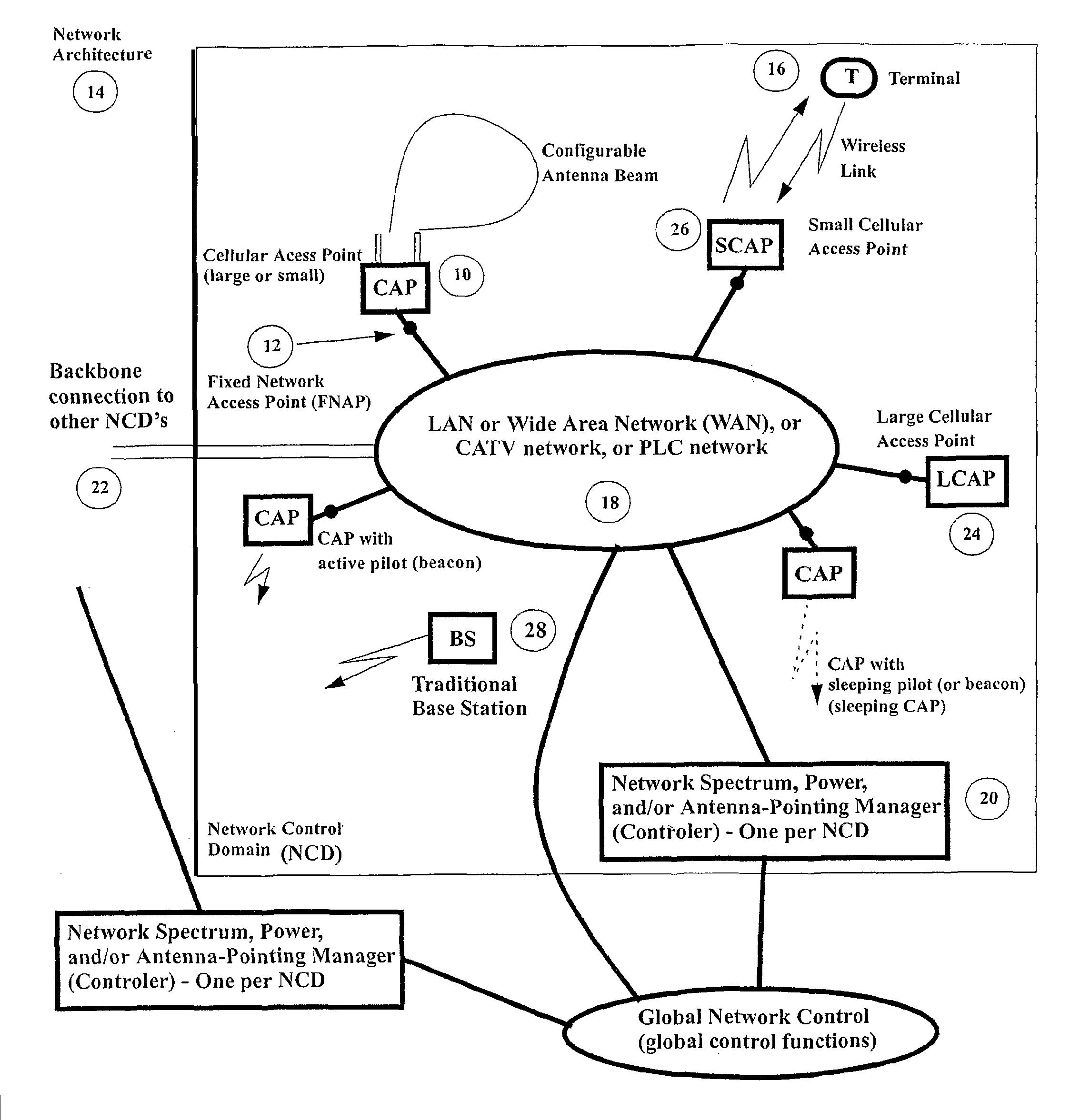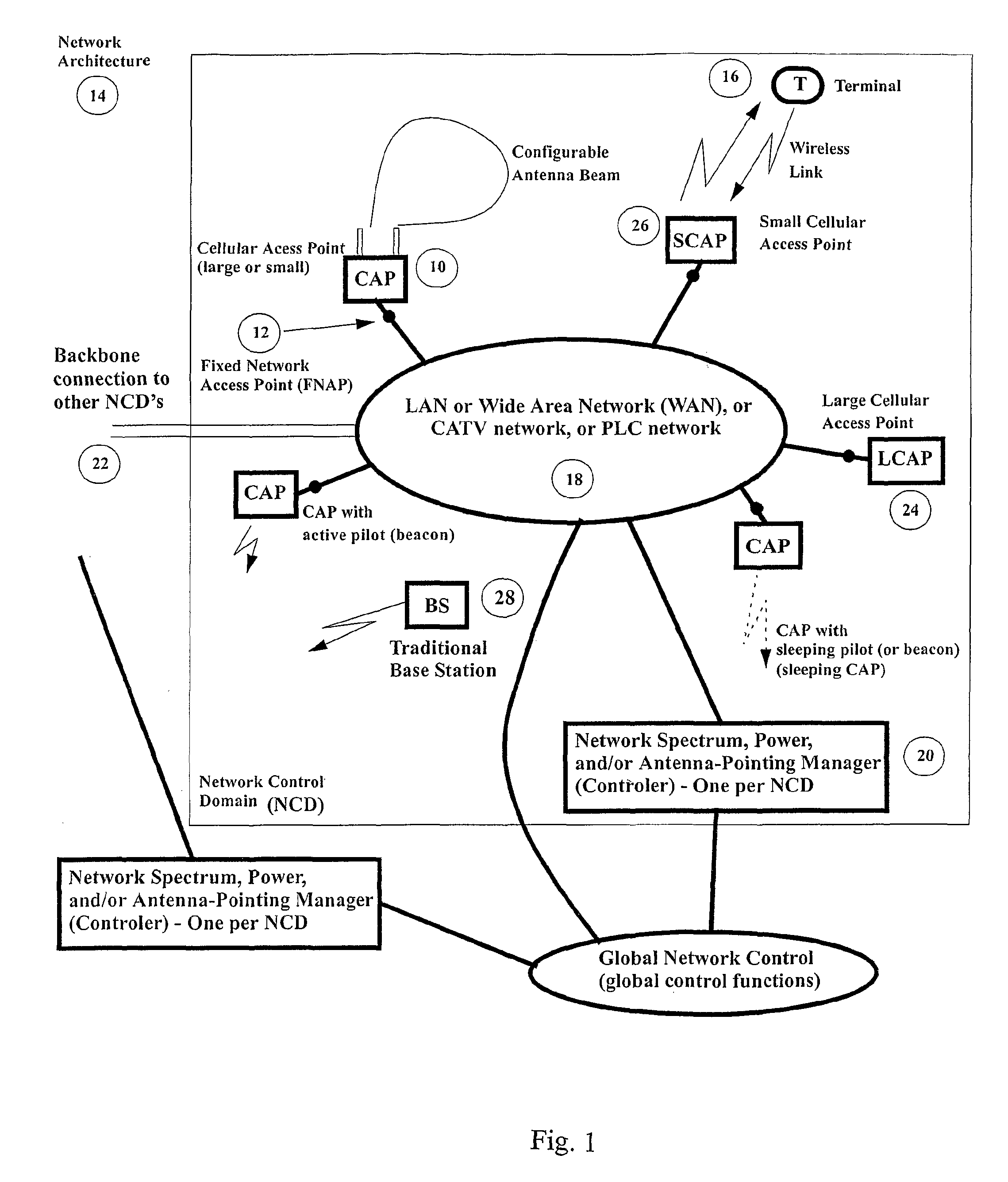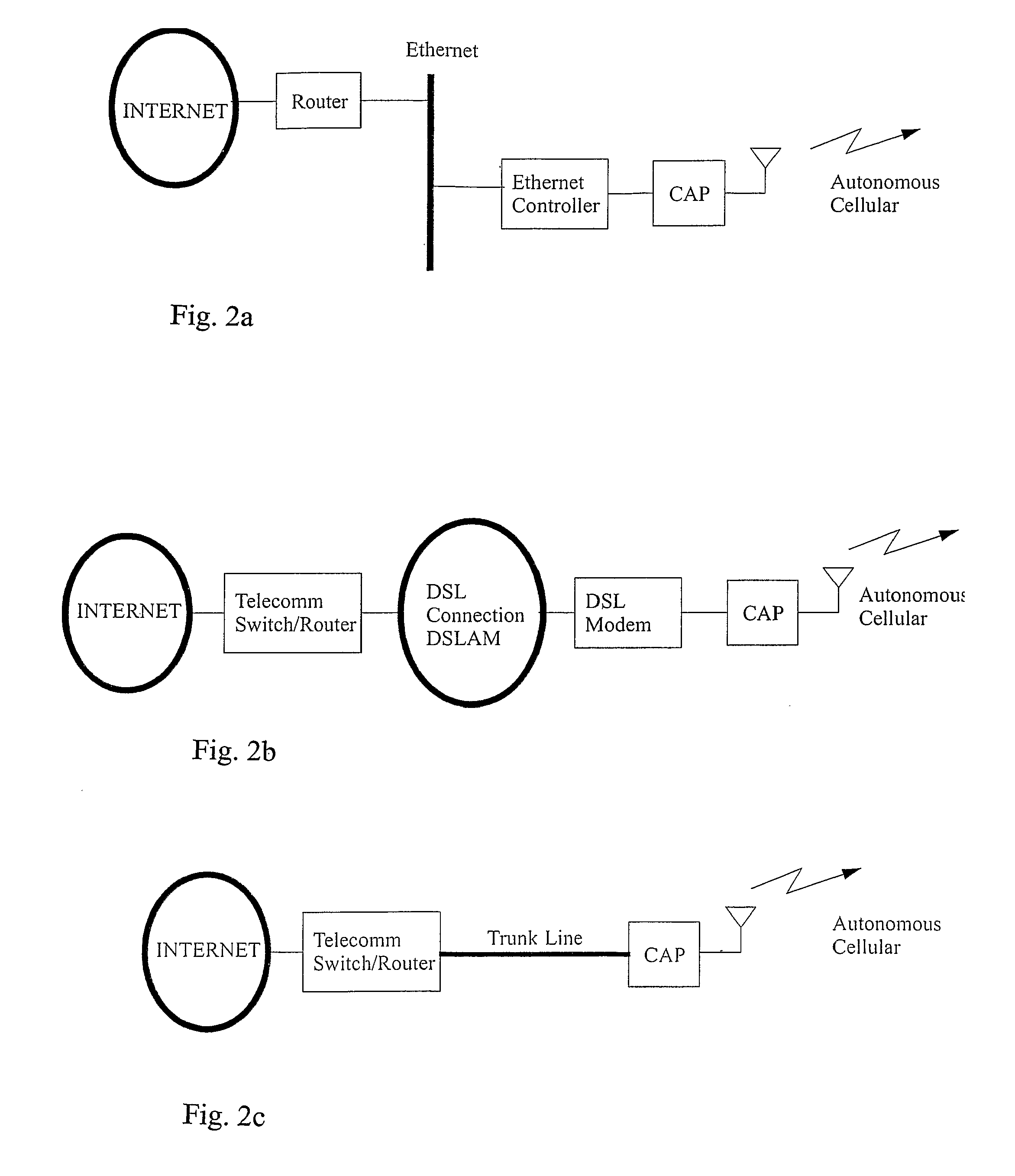Autonomous infrastructure wireless networks
a wireless network and wireless network technology, applied in the field of wireless communication network technology, can solve the problems of large deployment cost of base stations, less than expected success of 3g systems in providing internet access, and the nature of wireless network infrastructure deployment, so as to reduce the cost per base station and large network capacity
- Summary
- Abstract
- Description
- Claims
- Application Information
AI Technical Summary
Benefits of technology
Problems solved by technology
Method used
Image
Examples
Embodiment Construction
[0040]In the evolution of cellular networks, in addition to the effort required in planning the location of the base stations and the network optimization referred to above there is also significant effort required to deploy a network of trunked lines to interconnect the base stations to the public switched telephone network (PSTN). However, with the evolution of other networks such as local area networks interconnected by the Internet, extension of the telephone network to provide high speed data access over ADSL (asymmetric digital subscriber line) and cable networks, we now have the capability to bring cost effective network connects (fixed network access points, FNAP) to many locations throughout a population center or an enterprise. As illustrated in FIG. 1, fixed network access points (12) with high data transmission capability represent points at which we can install cellular access points or CAP (10) (whether large or small, as explained below) in a new wireless network base...
PUM
 Login to View More
Login to View More Abstract
Description
Claims
Application Information
 Login to View More
Login to View More - R&D
- Intellectual Property
- Life Sciences
- Materials
- Tech Scout
- Unparalleled Data Quality
- Higher Quality Content
- 60% Fewer Hallucinations
Browse by: Latest US Patents, China's latest patents, Technical Efficacy Thesaurus, Application Domain, Technology Topic, Popular Technical Reports.
© 2025 PatSnap. All rights reserved.Legal|Privacy policy|Modern Slavery Act Transparency Statement|Sitemap|About US| Contact US: help@patsnap.com



